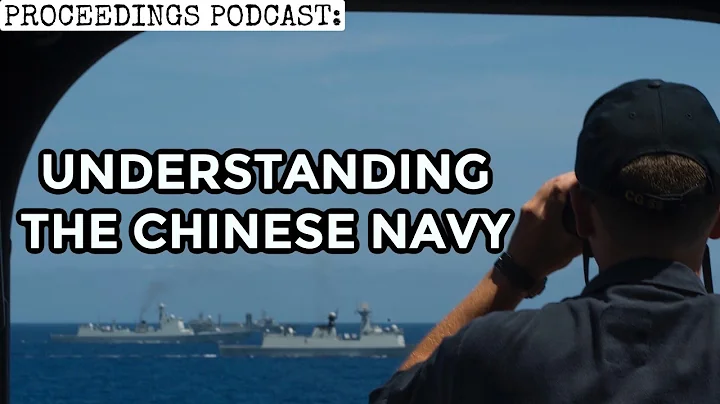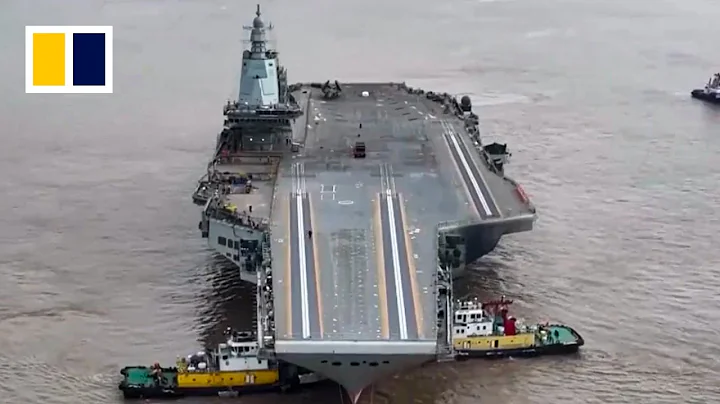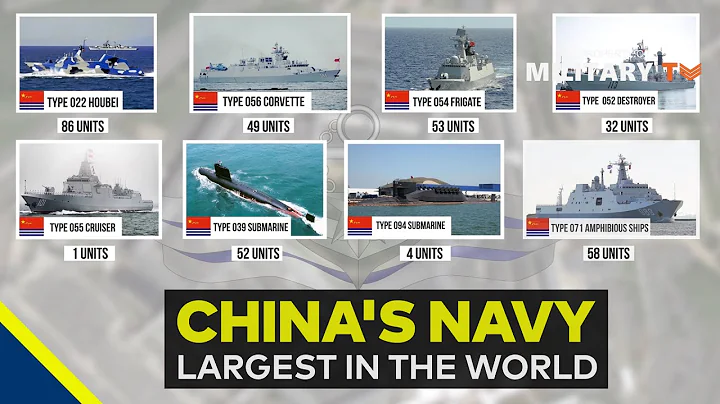

[The tragic Majiang naval battle caused the first modern navy established by the Westernizationists to be destroyed in an instant | from the Internet]
There is no aircraft carrier that never sinks, only a navy that never gives up! At that time, Fujian Junlu Lanlu founded an important force in China's modern navy. Today, we want to use the gesture of victory to comfort those people with lofty ideals who have continued to work hard and sacrifice for the prosperity of China! Deep sea, China is coming!
——Wuqiu Business Geography
Writing | Zhu Yadong
Chief Editor | Wang Qianma
Pictures | Zhu Yadong + Internet
Editor | Big Waist Essence + Yohao
Production | Pink Girl Page
6.17 is a special thing for the Chinese On this day, 127 years ago, Taiwan was officially included in Japan’s colonial rule. If this is pain, then on this day in 1967, our hydrogen bomb successfully exploded, which is joy. What is even more significant is that on this day in 2022, our third aircraft carrier Fujian was launched. The displacement of
html is 280,000 tons, which is almost the same size as the Kitty Hawk-class aircraft carrier of the US Navy. However, because of the use of advanced electromagnetic catapult , it has greatly improved the attendance rate of the aircraft carrier carrier-based fighter and indirectly enhanced the aircraft carrier's capabilities. combat effectiveness. It has to be said that from the improved version of the Liaoning to the self-produced Shandong, and now the Fujian that keeps pace with the times and can compete with the world-class ocean power , we have another sharp weapon in the deep sea!
[Congratulations on the launch of the Fujian, opening a new era of electromagnetic ejection | from the Internet]
Behind the aircraft carrier craze, China's pain in maritime defense has always been hidden. We have always been defenseless at sea, and we are used to enemies coming from land. We have never thought that enemies at sea are the biggest threat!
When we think of attaching importance to the navy and building coastal defense, there is already a hundred-year gap between us and the naval development of world-class maritime powers! We often say: Thirty years of army, fifty years of air force, and one hundred years of navy!
The Chinese are a group that loves the land deeply, so we have always called ourselves the sons of farmers. The Chinese are good at reclaiming land and cultivating it intensively, but in the past they were afraid and resistant to the ocean! Regarding water, China has always considered how to manage it, but not how to explore it! Therefore, the Chinese have been active in inland waters and offshore waters for a long time, and we have always known very little about the deep sea! Therefore, our armed forces on the water generally consist of the navy that sails inland rivers and the navy that operates offshore. The navy will not know what it is until the Western powers and Japan from the East have fought countless times from the ocean and destroyed the country's capital three times. ! Of course, China's navy in the true sense had to wait until the founding of New China to be established. To be precise, our emphasis on maritime armed forces and exploration of the ocean only began in modern times!
Speaking of the navy, we will naturally not forget the four major navies of Beiyang , Nanyang, Fujian, and Guangdong. They were once the "big guns" of the Westernization Movement that continued the life of the late Qing Dynasty, but only the Beiyang and Fujian navy Teachers can support their appearance, and they eventually become a weapon in the game between local Han landlords and governors and central government officials.As a result, each one acted independently and undermined each other, eventually turning into a "paper tiger" that shocked Asia and could be broken with just one poke! However, it is precisely because of the defeat in the Sino-Japanese War of 1894 and the tragic Mawei Battle that the Chinese people further understood the importance of the ocean and the importance of the navy as a maritime power! Therefore, the construction of China's maritime army has gone from navy inner lake tossing, to naval offshore exploration, and now to the development of the navy's deep sea ambitions!

[The flagship "Yangwu" cruiser of the Fujian Navy at that time | From the Internet]
It is precisely because Fujian took the first step in China's naval career that the naming of our third aircraft carrier today has its roots. Similarly , it is also a tribute!
The question comes again, why did Fujian take the first step in China's naval career? Why is it that today many people still cannot find the specific location of Ponytail, which will become an important landmark in the history of the development of the Chinese navy?
Speaking of the earliest connection between Fujian and the ocean, we must start with Fuzhou - Fuzhou is located on the southeast coast. It was first named "Ye" in the Qin and Han Dynasties, and was later renamed "Fuzhou" because of a Fushan mountain in the territory. This is indeed a "blessed" city. On the one hand, it is separated from the Central Plains by heavy mountains and can form an integrated whole. Therefore, when the Eastern Jin Dynasty Yiguan traveled south, it became the place where aristocratic families from the Central Plains settled. On the other hand, despite being closed, due to the existence of Minjiang , it still maintains smooth communication with the outside world. Tea from Wuyi Mountain can be transported along the Minjiang River to Fuzhou, and then across the ocean. In a sense, this is also an important reason why Fuzhou was favored by the West and established as a treaty port after the Opium War. And earlier, it became the starting point of China’s Maritime Silk Road!
"Book of the Later Han·Zheng Hongzhuan" contains an important record about the starting point of the Maritime Silk Road: "The seven counties of Old Jiaozhi all came from Dongye across the sea." The "seven counties of Old Jiaozhi" are "Nanhai, Cangwu" , Yulin , Hepu, Jiaozhi, Jiuzhen, Rinan", which are today's Guangdong, Guangxi, Hainan and Vietnam and other places. "Dongye" is the capital of the Minyue Kingdom recorded in "Historical Records: Biographies of Dongyue". "In the fifth year of the Han Dynasty (Gaozu), Wu Zhu was reestablished as the king of Minyue. The king's hometown in Minzhong was Dongye." In other words, two thousand Many years ago during the Han Dynasty, the land route to the north was not accessible and was blocked by Guanshan. Contributions from Guangdong, Guangxi and even the "Seven Old Cochin Counties" such as Vietnam in Southeast Asia were transshipped through Fuzhou Dongye Port, forming the Maritime Silk Road in Southeast Asia during the Han Dynasty.
Located in Quanzhou south of Fuzhou, it is also an important node of the Maritime Silk Road. In Tang Dynasty , Quanzhou was one of the four major ports of China's foreign trade. During the Song and Yuan Dynasties , "Citong Port" was known as "the largest port in the East". It traded with more than 100 countries and regions, showing a prosperous scene of "people from ten continents in the market" and "businessmen from all over the world amidst the sound of the rising sea". , known as the "Museum of World Religions".
This will undoubtedly promote the development of Fuzhou's shipbuilding industry and advanced navigation technology. In 1396, the thirty-six surnames from Fuzhou began to move to Ryukyu. Zheng He's fleet also chose Taiping Port in Changle County as its berthing base, material procurement place and starting point for sailing to the West. A large number of capable Fuzhou sailors were active in Zheng He's fleet. After that, Fuzhou's overseas trade gradually recovered, and in 1474 it became the seat of the Fujian Shipping Department. Fuzhou is also a hub for exchanges between China and Ryukyu. Fuzhou Rouyuan Station is specially used to receive Ryukyu envoys and businessmen. During the Jiajing period, Fuzhou Prefecture was seriously affected by Japanese pirates. Qi Jiguang entered Fujian twice to quell Japanese pirates. Since the late Ming Dynasty, European countries such as Portugal, Spain, the Netherlands, and Italy have had increasingly frequent contacts with Fuzhou. At the end of 1624, Aiulius introduced Catholicism to Fuzhou.
Another thing that needs to be remembered is: At the end of the Ming Dynasty, the private maritime armed forces of Nanping, Fujian Zheng Zhilong dominated Japan and Southeast Asia, and were able to compete with Western colonial maritime forces such as the Netherlands! In the process of the Qing Dynasty taking over the Central Plains to unify the world, it was also the Fujianese Shi Lang who led the team to capture Taiwan and regain the lost territory!
In 1844, Fuzhou was officially opened as one of the five ports. Since the establishment of the British Consulate on Nantai Island in 1845, 17 countries have established consulates in Fuzhou.The Taijiang region along the river and in Shang and Xiahang has become an import and export trade center, and Fuzhou's tea exports account for 35% of China's total tea exports. Foreign-funded, private and government-owned banks, enterprises, and firms were established in Fuzhou one after another. In 1847, Protestant Christianity began to spread in Fuzhou, and since then many church schools and the earliest newspapers and periodicals in Fuzhou were founded. After the rise of the Westernization Movement, in 1866 (the fifth year of Tongzhi), the Qing government established the Fujian Shipping Bureau (later changed to Fuzhou Shipping Bureau) in Mawei to build modern ships, and opened the Fujian Shipbuilding School to train relevant talents.
Let’s talk about ponytail here. As a municipal district of Fuzhou, it was born and prospered by the water. It is located where the Minjiang River enters the sea. It can be said to be the water gateway of Fuzhou. As the name suggests, some people often think that it looks like a horse's tail. However, its name is indeed related to horses, but it is a "stone horse" hidden in the river. The stone horse is hidden in the river near the coast. It is actually a cluster of reefs. It was built in the 5th year of the Ming Dynasty. "Fuzhou Prefecture Chronicle" has a concise description of this stone horse: "There is a huge stone like a horse. When the tide goes out, it will be seen, but when the tide comes, it will disappear." In order to eliminate navigation hazards, the later Sanbao eunuch Zheng He once carved stone pillars on the stone horses and placed lamps on the stone pillars every sunset. In this way, it has become a serious hazard on the river and an important symbol of the local area. Mawei is named because it is located on the river bank on the north side of Shima. On the south side, there is also Matou Village.
The location of Fuzhou Shipbuilding Bureau in Mawei is not only related to Mawei’s geographical advantages, but also to Fuzhou’s shipbuilding tradition. In the 40 years from the start of construction of the "Wannianqing" in 1868 to 1907, a total of 40 ships with a total tonnage of more than 47,000 tons were built here, accounting for 74% of the country's total shipbuilding tonnage at that time. Among them, there are 32 warships and auxiliary ships and 8 merchant ships; according to the construction technology, they are divided into 19 wooden ships, 9 iron ships and 12 steel ships. The "Weiyuan" gunboat launched in 1877 was China's first iron-wood composite ship, and the "Kaiji" launched in 1883 was China's first self-made cruiser. In addition, in 1870, the Shipping Bureau began to make its own main engines. It first developed a 150-horsepower 2-cylinder vertical steam engine , which was installed on the No. 5 ship "Anlan". Other precision instruments such as compass , telescope, barometer , theodolite , etc., were self-made by the Shipping Administration Bureau in the late Qing Dynasty.

[Mawei’s approximate geographical location | from the Internet]
However, the Shipping Bureau encountered some obstacles when it first opened. The main reason was that many ministers at that time believed that China’s industrial base was too weak and that the establishment of the navy should be mainly outsourcing. After that, as the Qing government attached great importance to Mawei Shipyard and Shipbuilding School, began to get on the right track. On July 4, 1879, the Qing government ordered the Fuzhou Shipbuilding Bureau to use self-developed warships to first train an army, and the Fujian Navy was announced! However, as soon as the Navy was established, it faced attacks from foreign enemies.
In order to control Vietnam, the Sino-French war broke out. Guba led the French fleet to forcefully invade the Mawei naval port. The Majiang naval battle was the only maritime contest between the two sides in the 1884 Sino-French war. Guba believed that in order to take the initiative on China's southeastern coast, it was necessary to eliminate China's only modern navy at that time, the Fujian Navy. When the Guba fleet forcibly broke into the Mawei Port of China, all the battleships of the Fujian Navy were also anchored here. Most of the officers and soldiers of the Fujian Navy graduated from the Shipbuilding School, and some of them had experience of studying abroad. Therefore, seeing the fierce momentum of the Guba fleet, and considering that the armies of the two countries were already exchanging fire in Vietnam, they advocated taking the initiative to attack it.
But what is extremely annoying is that several military and political officials who were in charge of the work in Fujian at that time knew nothing about international law knowledge, and at the same time they knew nothing about the relevant combat principles of the modern navy. After they asked the Beijing Central Committee for instructions, the Qing government issued a very vague instruction: "If they don't move, I won't move either." Therefore, the local military and political officials strictly ordered the officers and soldiers of the Fujian Navy: "You are not allowed to fire first without an order. You must wait for the enemy ship to open fire before you can fight back. Those who violate the law will be killed even if they are victorious.""
Strategic mistakes and equipment gaps were too large, and the Majiang naval battle turned into a one-sided battle. About half an hour after the battle began, the Fujian Navy Yangwu, Ji'an, Feiyun, Fuxing, Fusheng, Jiansheng, Zhenwei, and Yongbao Nine ships, Chenhang and Chenhang were sunk, and two ships, Fubo and Yixin, struggled to reach the beach and ran aground; at the same time, all 19 transport ships were sunk by French ships. A total of 521 officers and soldiers of the Fujian Navy were killed, 150 were injured, and 51 were missing. The Chinese battle reported that 5 French soldiers were killed and 27 injured, but French military data showed that the Fujian Navy had no casualties since then, but the talents of the Fujian Navy and other ships are still serving the Chinese navy and ocean. Service!

[A panoramic copper engraving of shipping published in a French newspaper in the 1870s | from the Internet]
As the "Wuqiu Commercial Geography" commented when the Fujian was launched (written by Zhou for Jun), Fujian can be said to be the birthplace of the modern navy. , starting from the Shi Lang Platform, the Fujian Navy was left, and then developed into the main force of the three major naval forces in the Qing Dynasty. The Fujian people supported almost all the generals and soldiers of the modern Chinese navy in the late Qing Dynasty and the early Republic of China.
As long as we have been to the famous Three Lanes and Seven Alleys in Fuzhou, we will know it. You will find that many of the founders of the Chinese navy grew up in the alleys, including the famous late Qing Dynasty official Shen Baozhen - it was he who served as the Minister of Shipping and built the Mawei Shipbuilding School in Fuzhou, and this school The first naval school in modern times was composed of people from Fujian. They became the main force in the bloody battles of Mawei and Sino-Japanese War. In the Sino-Japanese War of 1894, at least 10 commanders of the 512 warships participating in the war were classmates in the first phase of the Shipbuilding School. , among them, Deng Shichang refused to rescue and sank to death for his country, Liu Buchan self-destructed his battleship and died in the line of duty... When the news of the defeat of the Sino-Japanese War came, every household in Sanfangqixiang of Fuzhou was wearing hemp . There was Yan Fu who studied in Mawei. Shipman School, became the first person to master Western learning; there was a Sa Zhen Bing who was a survivor of the navy, and later became a living fossil of the navy through the Republic of China and New China.
Therefore, "Fujian serves as a testimony and testimony to China's maritime exploration." The birthplace of modern China's navy and shipbuilding industry, today's aircraft carrier deserves its name, Fujian. "
Of course, when we review the origin of the name "Fujian", we should also pay attention to the aircraft carrier's hull number 18 and the North America in the middle of the aircraft carrier emblem map! Regarding 18, it once reached Yan'an The main force of the revolutionary armed forces led by the Chinese Communist Party in the government army is the "18", which is also known as the Eighth Route Army. This armed force traveled 25,000 miles from Jiangxi and settled in Yan'an, starting a road to rapid growth. , defeated Japan, defeated the Kuomintang, singled out the four permanent members, and finally stood at the pinnacle of the world's light infantry, making countries around the world think and think again. Now that this number is given to the Navy's Fujian aircraft carrier, it may not mean that it uses the thorns on the road that the army once faced to finally become a success. God's legendary experience inspires the navy to show its sword bravely!
The emergence of North America means that the strategic mission and scope of the Fujian ship have been greatly adjusted compared with the other two ships. It is also the real beginning of our country's navy moving into the deep blue!



[Liaoning, Shandong] And the Fujian three ships ship emblem | from the Internet]
But whether the aircraft carrier can go out and explore the three oceans and five continents still has a long way to go!
Therefore, the future of the navy is still very long, not how many aircraft carriers we have. , but how many aircraft carriers can we launch!
Aircraft carriers operate in groups. There is no aircraft carrier that never sinks, only a navy that never gives up! Otherwise, the tragedy in Mawei, Fujian cannot be guaranteed to be repeated tomorrow.
So we must! Pay attention to the aircraft carrier, but also pay attention to the sword of the navy! Only with guns and bullets can the brave be invincible!
- THE END -
Wuqiu Business Geography
See the City’s Growth and Future


One Point Wuqiu Business Geography





















